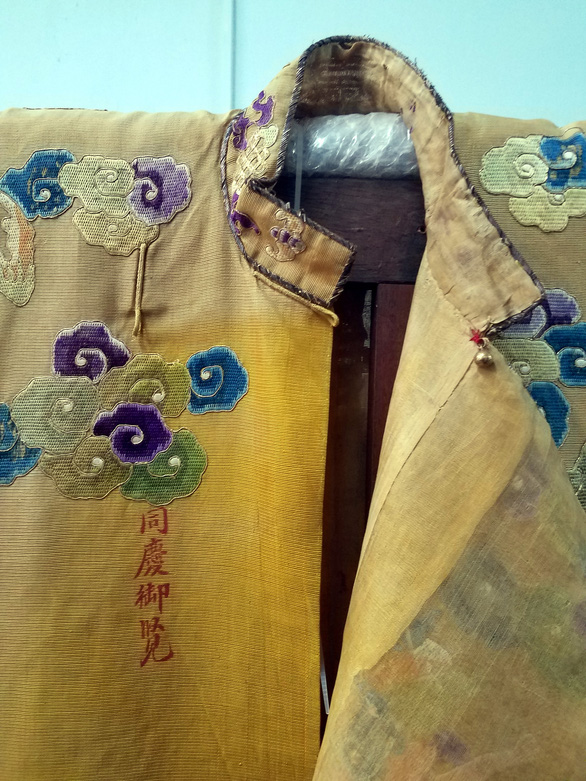The Ho Chi Minh City Museum of History’s archive contains two special imperial mantles with autographs by Emperor Dong Khanh – the ninth emperor of Vietnam’s last monarchy, the Nguyen Dynasty (1802-1945).
Despite time, these autographs – written in red ink on brocade fabric – still look bright and sharp.
These two imperial mantles are also precious artifacts carrying untold stories of culture and royalty.
Imperial goods
After the 1968 Spring Mau Than General Offensive and Uprising, many families including former royalty in Hue City ran to Saigon (now Ho Chi Minh City) in search of shelter.
Along with them, they carried many antiques once being used and placed in imperial palaces and pavilions.
One family’s collection included three emperor’s mantles and two prince’s gowns.
The collection caught the eyes of Saigon antiquity hunters.
However, during their stay in the city, the family asked some brokers to sell all artifacts for the Saigon Archaeological Institute.
The event set a significant milestone for a collective effort of stopping Vietnam’s royal objects from being drained to other countries.
The attire was later transferred to the Vietnam National Museum, now the Ho Chi Minh City Museum of History, in 1974.
The museum’s report on September 25, 1974 numbered the two emperor’s mantles 5134 and 5135, which were bought at VND250,000 and VND420,000 then, respectively.
As one tael of gold in Saigon in 1972 was priced at VND32,000 (a tael is equal to 1.2 troy ounces), the two gowns were bought at about 20 taels.
Invaluable artifacts
That price was simply the sale price of two imperial mantles.
Their values are immeasurable, according to Hoang Anh Tuan, the museum’s director.
Fabric, patterns, and sewing techniques are important topics for researchers to learn about the royal culture of the Nguyen dynasty.
The two gowns, one in red and another in yellow, are both long, wide-sleeved.
The yellow mantle was embroidered with a big U-shaped five-clawed dragon. Its scales were stitched with golden glitter threads.
On its front, there are four Chinese words written in red ink, literally translated as 'Emperor Dong Khanh has seen.'
|
|
| The autograph of Emperor Dong Khanh is seen on the front of the yellow mantle. Photo: Lam Dien / Tuoi Tre |
It is the emperor’s autograph as he wrote the line after the mantle was finished, Tuan said.
This is the authentic evidence proving that the royal robe belonged to Emperor Dong Khanh.
The red one was embroidered with a golden four-clawed dragon.
There are 15 Chinese words found on its back lining and collar which say the gown was worn by Emperor Dong Khanh when he was still a crown prince.
It explains why the main decoration is a dragon with four claws.
The autograph on the red gown reveals a feature of the Nguyen royalty’s inner life in which the emperor gave his own attire to his son.
According to the monarchy’s regulations, princes – Emperor Dong Khanh’s sons – were granted their own clothes.
However, the emperor might find his imperial mantle used when he was a crown prince then specially give it to a son.
The story was implied in the Chinese words, saying “specially gifted to the prince this gown” and “used a long time ago and stored in the palace."
Like us on Facebook or follow us on Twitter to get the latest news about Vietnam!




























